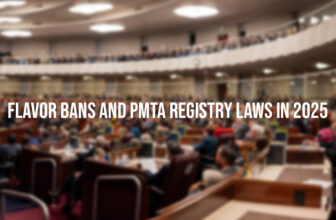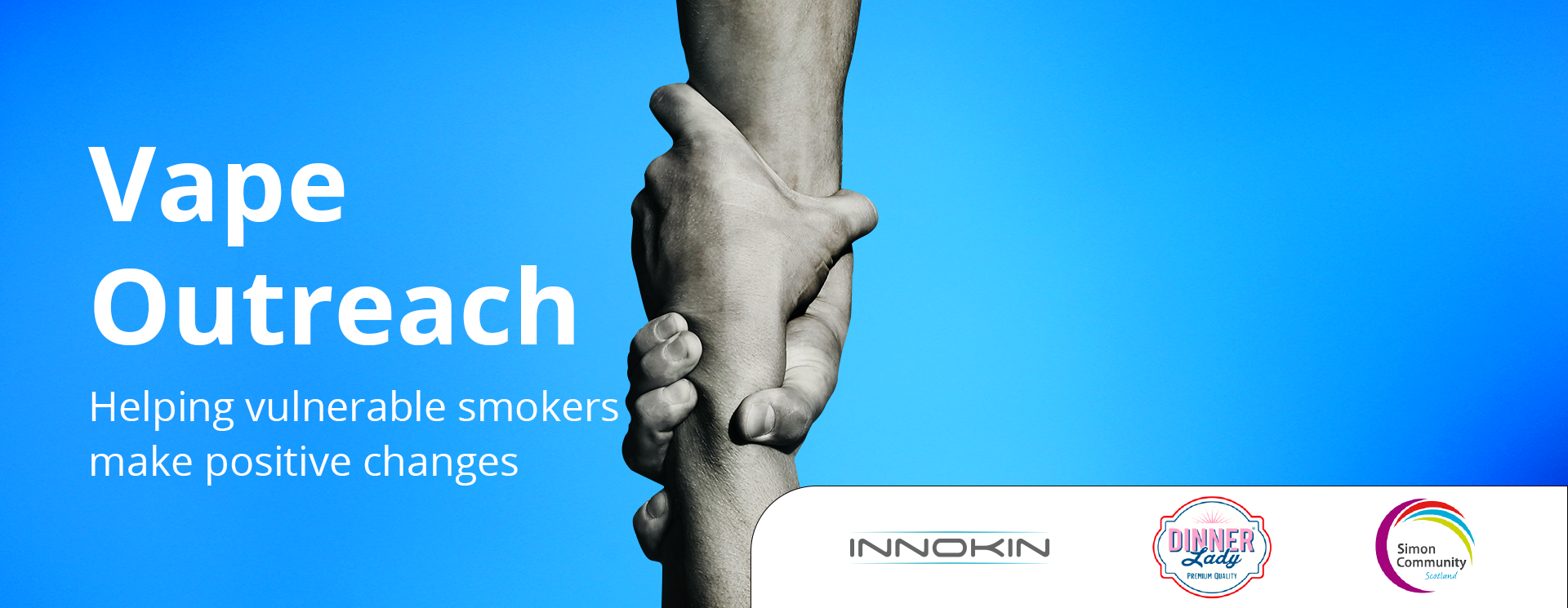
This is a long, but a very monstrous and interesting read. The article gives insight about multiple categories in the electronic cigarette industry, such as the FDA, AEMSA, CASAA and many more.
The article is outstanding and well written. It’s ones like these that will stand out and above the shameless media of naysayers.
By Marilyn Odesser-Torpey, Associate Editor and John Lofstock, Editor.
Should electronic tobacco devices be regulated as tobacco products or are they something completely different? Four new trade associations with varying opinions and agendas guide this booming category.
With 3.5 million e-cigarette users and an estimated $1 billion in smoke-free alternative sales, this up-and-coming industry continues to be as controversial as it is profitable. Central to the discussion is whether or not e-cigarettes are and should be regulated and taxed by the government as a tobacco product.
Needless to say, retailers have several trade groups looking out for their best interests—NACS, the National Association of Tobacco Outlets (NATO) and the Tobacco Merchants Association (TMA) to name a few—but the battle to represent the nascent e-cigarette industry is just brewing. And at just the right time, as the federal government cannot wait to grip its fangs into another of the industry’s promising profit centers.To help guide manufacturers and retailers alike, multiple nonprofit associations have been formed, each with the purpose of taking a leadership role in representing and promoting the e-cigarette—or entire smoke-free—segment. The roots of the Tobacco Vapor Electronic Cigarette Association (TVECA) go back to 2008 when distributors and other interested parties got together “to be the voice of the beginnings of the ‘e-cig’ industry,” said founding member and CFO Thomas Kiklas.
Among initial activities of the TVECA (originally known as the Electronic Cigarette Association or ECA) were lobbying U.S. Senators and Congressmen for “responsible” legislation of the products’ import and sales, and providing the media with information about what they are and how they work.From the beginning, the association took the stand that e-cigarettes are tobacco products because the nicotine they deliver is derived from the plant. The association has never positioned the products as drug delivery or smoking cessation devices.
In 2009, the FDA seized association co-founder Ray Story’s shipment of e-cigarettes, claiming that the technology was an unapproved drug delivery device. When Story took his case to federal court, the court decided in his favor, ruling that e-cigarettes are not drugs/devices unless they are marketed for therapeutic purposes, and that they can be regulated as “tobacco products.” This decision still stands today.
To sway the court of public opinion, the FDA announced that it had found carcinogens and toxic chemicals, including an ingredient used in antifreeze, in e-cigarettes. TVECA refuted the claim by launching a “Truth About E-Cigarettes” campaign and Website (www.truthaboutecigarettes.com). The Website still provides legislators, media and consumers with basic facts and scientific studies about e-cigarettes.
Aside from disseminating information, the association works within the industry to establish codes of business practices and work with legislators to determine taxation and legislative parameters. Members include domestic suppliers (manufacturers and importers) and distributors. Now an international organization, TVECA also includes member organizations from Italy, Germany, the Netherlands and Spain
Building a Foundation
Last year, two new associations came to the industry forefront—the Smoke Free Alternatives Trade Association (SFATA) and the American E-Liquid Manufacturing Association (AEMSA).Founded by VMR Products (V2 e-cigarettes), Green Smoke E-cigarettes and Johnson Creek Smoke Juice and Electronic Cigarettes, SFATA was formed “to speak for the industry as a whole, including the manufacturers, distributors, retailers, online sellers, wholesalers, importers, end users and ancillary service providers, such as insurance and trucking companies,” according to SFATA’s Executive Director Cynthia Cabrera.
Initially, dues were set high “to weed out people who wouldn’t take the association’s goals and activities seriously,” Cabrera said. Original funding was provided by VMR, Green Smoke and several Chinese companies that became members.
Since then, membership fees have been made more reasonable so they do not present a barrier to entry for smaller companies. Today, SFATA runs on membership dues and donations.SFATA’s stance on e-cigarettes is that they are neither a tobacco product nor medical device. “Some don’t even contain nicotine,” Cabrera said, adding that VMR and Green Smoke position their products as “adult alternatives,” not smoking cessation devices. “It’s more of a technology product.”
Cabrera noted that the organization wants the FDA to take its time before categorizing e-cigarettes. “The FDA doesn’t have enough information at this time to make an informed decision with regard to regulating e-cigarettes purely as tobacco products. More testing and research has to be done, and we’re promoting that,” she said. “Our main focus right now is educating the FDA about what e-cigarettes are and what they aren’t.”With the help of its legal team, including an FDA regulatory expert and the agency’s former lead counsel, SFATA is working to put good
manufacturing practices in place for the industry. The association is also battling the “knee jerk reaction” some special interest groups have to a product that looks so much like a regular cigarette with solid information, Cabrera said.SFATA also offers “grassroots resources” and information to the public on its Website (www.sfata.org). Among those activities are “calls to action” and coming soon are form letters on its site that citizens can use to contact their legislators about particular regulations that pertain to e-cigarettes.
Liquid Verification
AEMSA was founded by two vaping advocate volunteers, Lou Ritter and Linc Williams, who have no financial ties to the industry and continue to receive no remuneration. It is an all-volunteer organization that represents American manufacturers of e-liquids whether they sell wholesale or retail, online or in brick and mortar stores. Some non-manufacturing participants, such as consumer advocates and subject matter experts may also join by invitation.“We were concerned about the lack of verifiable product content; there are many individual product Websites, but we didn’t see verifiable product content accuracy and ingredient quality disclosure/accuracy—what ingredients are in these products, the environments in which they are made and we wanted to inform the public about some of the scientific and medical research available,” said Ritter, who serves as president of AEMSA.
“Not only that, but prior to AEMSA posting our standards, many consumers didn’t even know what questions to ask. The posted AEMSA Standards provide detailed information to any and all interested parties, including consumers and regulators,” Ritter explained. “Every consumable product has some sort of regulatory guidelines for consumer confidence and stewardship; we thought this one should too.”
AEMSA considers the e-cigarette to be a “tobacco harm reduction smoking alternative.” Although the organization acknowledges that nicotine is, as Ritter described it, “an ingredient of concern that requires responsible handling,” it does not view the e-cigarette liquid as a tobacco product. “This is a new category of product,” he emphasized.
On AEMSA’s Website (www.aemsa.org) is an extensive set of self-regulatory standards that has been developed “to create responsible and sustainable practices and process for the safe manufacturing of ‘e-liquids’ used in electronic cigarettes” and “to provide consumers with higher degrees of confidence that our members’ products are manufactured with professionalism, accuracy and safety.”
On the site, the organization offers certification criteria and is in the process of actively certifying members, according to Ritter.
“We’re establishing a role model for the industry,” he said. The organization also supports continued research and testing to analyze any and all potential health implications of vaping.Like the other organizations, AEMSA considers itself to be a “voice” for the industry with the FDA and other regulators. Its members believe that the primary focus of any potential regulation needs to be on the e-liquids themselves rather than on the technology because it is the liquids that are being vaporized, inhaled and exhaled.
Consumer Focus
The Consumer Advocates for Smoke-free Alternatives Association (CASAA) is another all-volunteer organization formed in 2009 by members of an online forum as an advocacy group to raise awareness and protect consumer right of access to “effective, affordable and reduced harm alternatives to smoking.”“We’re a true grassroots, consumer-focused organization and our mission is to promote Tobacco Harm Reduction (THR), the practice of switching to non-combusted products that could be used as a replacement for smoking,” said CASAA President Elaine Keller.
According to its mission statement, the organization was “created as an answer to the anti-Tobacco Harm Reduction groups’ efforts to ban THR products.”
CASAA is a registered nonprofit in Alabama and Virginia, and has applied to the IRS for nonprofit 501(c)(4) status. Although it accepts donations from a variety of sources to support its activities, the organization has no financial or policy agreements with the electronic cigarette, tobacco or pharmaceutical industries. Not a trade association, its bylaws strictly limit the number of product vendors to one-third of its board members to prevent industry interests having a majority vote, Keller said.
On its Website (www.cassa.org) CASAA provides information for members and the general public in the form of news articles, call to action alerts, scientific research studies, petitions, legal actions and pending legislation. The organization also produces brochures and other printed materials about reduced harm alternatives to smoking.Member activities include writing pro-tobacco harm reduction articles and issuing statements to the media regarding legislation.
“For the first half of the year, we usually find ourselves fighting to keep the wolves from the door, trying to prevent proposed legislation limiting where e-cigarettes can be used or levying taxes on any THR product,” Keller noted.The rest of the year, she said, is spent putting together and disseminating information. Keller pointed out that CASAA is also trying to set up a meeting with the FDA to discuss consumers’ points of view and concerns. “They’ve talked to the tobacco people and the e-cigarette people, but not consumers, the stakeholder group that has the most to gain or lose from this regulation,” she said.
Looking Forward
As the category continues its impressive growth, others—specifically the product manufacturers themselves—will have an enormous hand in how electronic tobacco products are regulated, if they are at all.In June 2009, President Obama signed into law the Family Smoking Prevention and Tobacco Control Act, which gave the FDA’s Center for Tobacco Products the authority to regulate the manufacture, labeling, distribution and marketing of tobacco products. However, it does not encompass electronic nicotine-delivery devices, including e-cigarettes.
The FDA’s forthcoming ruling, known as the “deeming rule,” is the sort of regulatory brick-laying that might escape notice. The ruling will determine what regulatory requirements will be placed on these nicotine-delivery devices. At stake is whether innovative forms of nicotine delivery will be left unregulated, lightly regulated or forced down a development path akin to new drugs, where hundreds of millions of dollars and many years are spent researching and documenting the safety and efficacy of new medicines.
In the meantime, retailers will have an open window to capitalize on the enormous popularity e-cigarettes are having with adult consumers. Given the compression on tobacco and fuel margins and the increased competition for foodservice dollars, these little electronic devices may just be the breath of fresh air the industry needs.
Source: http://www.csdecisions.com/2013/06/25/whos-minding-the-e-cigarette-industry/








